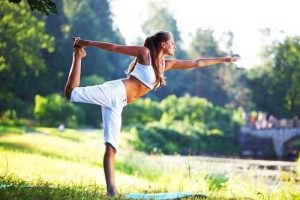Bodyweight exercises are the ultimate way to begin strengthening your body for better health and functional movement for the rest of your life. When it comes to some of the best exercises for total body fitness, planks are at the top of the list. Not only are there multiple variations, whatever your fitness level may be, there is a modification or challenge for you to try.
How to Perform Planks
A basic plank requires you to do the following:
- You can either walk out to plank or start in a prone position in the floor, preparing to press up. When walking out, keep the shoulders sliding back towards the spine so that the shoulders do not inch up towards the ears. If prone, bent the elbows slightly in towards your sides and do not tense in the neck.
- In plank position, engage the core and pull the belly button in towards the spine. Also stabilize the pelvis.
- Elbows should be in line with the shoulders, but the hands can be slightly forward. Fingertips can be turned slightly outward if it helps the shoulder blades stay relaxed.
- Hold the position for 15-90 seconds. Remember that it is maintaining proper technique, even if it is only for 20 seconds. Work up to a longer time.
- Rest for 30-60 minutes then repeat 3-5 times.
Note on foot placement: keep the heels in line with the hip bones, and energize through the heels. Don’t sink backwards, but rather find the ball of the foot and balance there.
5 Great Benefits of Planks
You will be amazed by what planks can help you accomplish. Do these bodyweight exercises daily to see the following happen.
1. Increased metabolism
Despite being an isometric (unmoving) exercise, planks are indeed an exercise. As you challenge yourself in plank position and with variations, you are increasing your heart rate and burning more calories than you would be just sitting around. Strengthening the core means that those muscles will need to burn more calories throughout the day to work properly.
Should you want to do planks but have weak shoulders, high blood pressure, or other concerns, use a stability ball to put you at an incline. You can also try side planks and reverse planks – both have the same benefits as regular planks.
More: 7 Food Combos to Make a Protein-Packed Smoothie Without a Powder
2. Good mood
Plank to combat depression and stress. Since planks are an exercise, and exercising releases endorphins, you get that runner’s high without ever running. Moreover, planks help release tension in the spine, energize the legs, and empowers you from the inside out.
Every time you hold your planks longer or do something more challenging, you will feel triumphant. Planks help even the reconditioned get back into a decent fitness routine.
3. Strengthening the core
Planks are perfect for targeting the entire system of abdominal muscles: the transverse abdominus, rectus abdominus, external obliques, and even the glutes. You need to squeeze all of these muscles to keep proper alignment throughout the body. As you move through variations, you are moving from the core (which is what we should be doing 9 times out of 10) to turn, twist, bend, and reach.
Moreover, planks will incorporate all of the abdominal muscles, erector spinae, glutes and quads. They are number one for working the entire core, so you can tighten your belly.
4. Better posture
When your entire core is being worked, the muscles that help keep you upright and centered are also strengthened. That means that your posture improves.
Such improvements aid in proper alignment and better respiratory and nervous system functioning. When you do not slouch and have a lengthened spine, you not only look leaner and more confident, you feel better.
5. Functionality
Think of “functionality” as a cloud term for enhanced movement, coordination, and balance. Plank trains the abdominals for stabilizing the body no matter what you are doing. And when you know how to engage them correctly, you work more efficiently.
More: The Pros and Cons of Taking Dance Classes
No matter what you do – dancing, running, biking, hiking, climbing, or swimming – a strong core is so beneficial to functional movement. This is because through planks the body learns how to fire all those muscles simultaneously.
Top Image Source: pinterest.com







